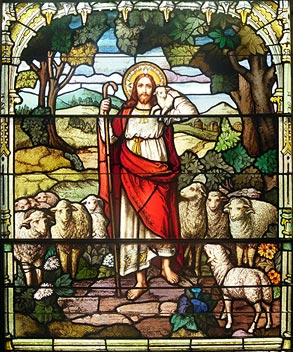Rectory 504-899-1378 | Fax 504-899-0480
School 504-891-1927
ststephenpar@archdiocese-no.org
From the Pastor – November 30, 2025
 Therefore, stay awake!
Therefore, stay awake!
For you do not know on which day your Lord will come.
Be sure of this: if the master of the house
had known the hour of night when the thief was coming, he would have stayed awake
and not let his house be broken into.
So too, you also must be prepared,
for at an hour you do not expect, the Son of Man will come. (Mt 24:42-44)
A lot of times, the analogies of Jesus are just that – analogies. But sometimes they hit closer to home. At times, we have had problems with security at St. Stephen Church. We have had incidents where people have tried to get into our church by breaking door handles and even using pry-bars. Every time we put up our pro-life signs in front of the church, someone steals them. We’ve had chalices and even a collection bag stolen. And then there’s the obvious feeling of anxiety and anger that someone would try and break into a church. In truth, there’s also a feeling of helplessness, in that it’s hard to believe that these things happened at a time when we were so close to a police station! In the end, it really remains one of those things over which we have no control. These “real life” experiences (and I’m sure many of us have had the experience of being burglarized or robbed) give us real life context toward understanding the words of Jesus. We believe in the Second Coming of Christ. As the Apostle’s Creed says, Jesus: ascended into heaven and is seated at the right hand of the Father. “He will come again to judge the living and the dead.” It could happen in a month, and it could happen in 10,000 years. We know not the day or the hour. But we’re called to be ready for it.
In a sense, we “ready” ourselves for the Second Coming in many ways, primarily by experiencing the presence of Christ in His Word, in the Sacraments, in the Church, and in our service to others. By doing so, we assure ourselves that we will recognize Jesus when He comes again. But the Advent period is a time when the Church calls us to be particularly attentive to our sense of expectation of the coming of Christ. During Advent we prepare to celebrate the first coming of Christ in Bethlehem, when He came in humility, as a means of preparing ourselves for His Second Coming in glory. Just as we might take precautions at St. Stephen’s to make sure dark areas are lit with floodlights, security cameras are working and doors are locked, we might also try to shine light on the devil through making a good Confession which provides us with the grace to lock sin out of the temple of our body and soul.
Real life reminders about crime (a “thief in the night”) provided the first listeners of Jesus with real warnings about something more important: the real-life state of their souls. They do the same for us, 2000 years later. Let’s stay awake!
(Very Rev. Msgr.) Christopher H. Nalty
msgr.nalty@gmail.com
Masses
St. Stephen
Saturday Vigil at 4:00 pm
Sunday at 8:00 am and 10:30 am
Sunday at 5:00 pm at OLGC
Our Lady of Good Counsel (OLGC)
Center of Jesus the Lord
Charismatic Mass
Sunday at 10 am
Weekdays Masses
Monday – Friday 6:30 am St. Henry
Tuesdays 6:00 pm St. Stephen
First Fridays 6:00 pm Latin Mass
Adoration of the Blessed Sacrament
Tuesdays 4:45 – 5:45pm St. Stephen
Thursdays 7:00 – 8:00am St. Henry
Confession Times at Good Shepherd
Saturdays 3:00 – 3:45pm St. Stephen
Sundays 9:30 – 10:15am St. Stephen
Sundays 10:00 – 10:30am OLGC
First Fridays 6:30 – 7:00pm OLGC
Newsletter Sign Up
Christmas Decorating Help Needed
We will need help in decorating the church for Christmas because some of our regulars are unable to do so. This is an early message, but we will decorate the church on December 14, 2025 after the 10:30am Mass. Anyone willing to help please contact the parish office.
THANKSGIVING SCHEDULE
Masses on Thursday, November 27 and Friday, November 28 will be at 8:00am at St. Henry Church
Thanksgiving Baskets – THANKS!
The St. Vincent de Paul Society would like to thank everyone for your help in providing Thanksgiving Baskets for the needy of our parish. With your help we are hoping to feed over 40 families for Thanksgiving this year. Thanks for sharing your blessings with others. “For I was hungry, and you gave me food; I was thirsty, and you gave me drink; a stranger, and you welcomed me.” (Mt. 25:35)
Parish Intentions
In Memory of . . .
Bennie Vance Atkins, Ceila Atkins, Herman Bastian Sr, Lydia Maria Bastian, Phillip Bellini, Mr & Mrs Elmo J. Bourgeois, Brandon Brimmer, Rodney & Rose Bullen, Marie Louise Broussard Brown, Marlene Brown, Neely Brown, John Brunet Sr, Bernard Caillouet, Doris Pinseau Caillouet, Odile & Albert Ceasar, James & Ernestine Charlebois, Robert Charlebois, Carol Clanton, Hurlin & Ruby Daire, Beverly Davis, Frank H. “Happy” Davis Jr, Charles & Mary Ann Doyle, Mary & Alvin Rudy Eason, Sonia Lopez Eisele, Hugh & Donie Evans, Hugh Evans Jr, Claire Brown Fair, Hazel Fair, Leland Fair, Leonard Fair, William Fair, Lewis Fawcett, Patricia Fleming, David Forly, Robert Fuentes Jr, Aaron “Skip” Gamble, Armen Gamble, Lilian Gamble, Joan Glynn, Larry Harlaux, Sally & Dick Hodges, Jessie Jackson Sr, Thelma Jackson, Felicia Johnson, Fred Johnson Sr, Fred Johnson Jr, Jaime Jones, Edward Julien, Mary Julien, Mary Jane Kopal, Florancia Lafredo, Wilfred LaHaye, Benedict LeBlanc, Edward LeBlanc, Margaret LeBlanc, Linda Lewis, Reese Lewis, Rafael Madan, Shirley Mallory, the Marchessault Family, Anne Meeks, the Mosczynski grandparents, Deacon Paul Nalty, Lyman Newsham, Dorila Olivares, Donald & Joan Ornellas, Alvin J. Paul Jr, Pearl H. Paul, the Picot & Powell Families, Laureano Pinseau, Daniel & Lucille Powell, Daniel T. Powell, Darius Powell, Joseph & Lottie Preis, Elvis Presley, the Ritchotte Family, Shawanda Robertson, Richard J. Roth Jr, Stanley & Sally Ryba, the Ryba grandparents, Frances Scaverson, Helen & Frank Schmidt, Sidonie Schmidt, Alex Shelton, June Smith, Bruce & Mickey Snider, Mr & Mrs Lloyd Templet, Neil & Georgia Mae Thompson, Gene & Kelly Watt, Eric Weaver, and Anne & Earl Westfall Sr.
First Friday Devotion
Jesus recounted the following to St. Margaret Mary, and this devotion has been recognized by the Church:
“To all those who, during nine months on end, will receive Holy Communion on the first Fridays of every month. I promise the Grace of final perseverance. They will not die in My disgrace, but will receive the Sacraments (if necessary), and My Heart will be sure shelter for them in that extreme moment.”
The First Friday promises of our Lord to St. Margaret Mary:
1. I will give them graces necessary for their state of life.
2. I will establish peace in their houses.
3. I will comfort them in all their afflictions.
4. I will be their strength during life and during death.
5. I will bestow a large blessing upon all their undertakings.
6. Sinners shall find in My Heart the source and the infinite ocean of mercy.
7. Tepid souls shall grow fervent.
8. Fervent souls shall quickly mount to high perfection.
9. I will bless every place where a picture of My Heart shall be set up and honored.
10. I will give to priests the gift of touching the most hardened hearts.
11. Those who shall promote this devotion shall have their names written in My Heart, never to be blotted out.
12. I promise you in the excessive mercy of My Heart that My all-powerful love will grant all to those who communicate on the First Friday in nine consecutive months the grace of final penitence; they shall not die in My disgrace nor without receiving their sacraments; My Divine Heart shall be their safe refuge in this last moment.
Each First Friday at the Basilica of St. Stephen we celebrate the Traditional Latin Mass at 6:00pm as a means of providing an opportunity to obtain the First Friday promises Jesus made to St. Margaret Mary Alacoque, and of course you can make your First Friday at the morning Mass on Friday at 6:30am.
St. Andrew, Apostle November 30
According to the Gospel of John, Andrew was originally a disciple of St. John the Baptist. When John pointed to Jesus and said, “behold the Lamb of God!” Andrew left John to follow Jesus. Because of this, Andrew is traditionally known as the first disciple of Christ and the one who introduced his brother, Peter, to the Lord. After Our Lord ascended into Heaven, St. Andrew preached the Gospel in Greece and Turkey. He was put to death on a cross shaped like the letter X, to which he was tied rather than nailed. He lived two days in that state of suffering, still preaching to the people about the Messiah.
The Advent Wreath

The Advent wreath is a set of four candles which are lit each Sunday of the Advent Season. Three of the candles are violet-colored, and one is rose-colored. The violet candles symbolize faithful expectation, and the rose candle symbolizes joy and hope. These colors mirror the colors of the priest’s vestments used during the Sundays of Advent. In earlier times, the season of Advent had stronger penitential and ascetic aspects, and a relaxation of disciplines was offered on the third Sunday of Advent, called Gaudete Sunday, from the Latin for “rejoice”, the first words of the Introit. This turn is reflected in the shift from violet to rose. One violet candle is lit on the first evening of Advent (a Sunday). On successive Sundays, the second violet candle is added, then the rose candle on Gaudete Sunday, and finally, the third violet candle. So enough about the colors, what about the flame? The flame signifies Christ, the “Light of the World.”
Advent Liturgies
With Advent here for next four Sundays, I want to call attention to changes that we may observe in the liturgies. Advent has a twofold character: it is a time of preparation for the Solemnities of Christmas, in which the First Coming of the Son of God to humanity is remembered, and likewise a time when our minds and hearts are led to look forward to Christ’s Second Coming at the end of time. For these two reasons, Advent is a period of devotion and expectation.
The liturgical color for Advent is violet, just as it is in Lent. Both seasons prepare us for great feast days. And like Lent, Advent is meant to include an element of penance in the sense of preparing, quieting and disciplining our hearts for the full joy of Christmas. “During Advent the floral decoration of the altar should be marked by a moderation suited to the character of this time of year, without expressing in anticipation the full joy of the Nativity of the Lord and the use of the organ and other musical instruments should be marked by a [similar] moderation…” (General Instruction to the Roman Missal n. 305 and n. 313)
In keeping with liturgical tradition and Church guidelines, Advent liturgies are more restrained, and briefer. The Gloria is omitted, there is less sung music.
On Christmas Day, we will joyfully celebrate the “fullness” of the sign of Communion as we turn from the “austerity” of Advent to the glory of the Nativity of Our Lord!
The Proclamation Thanksgiving
This is the proclamation which set the precedent for America’s National day of Thanksgiving, and sets apart the last Thursday of November “as a day of Thanksgiving and Praise.”
The year that is drawing towards its close, has been filled with the blessings of fruitful fields and healthful skies. To these bounties, which are so constantly enjoyed that we are prone to forget the source from which they come, others have been added, which are of so extraordinary a nature, that they cannot fail to penetrate and soften even the heart which is habitually insensible to the ever watchful providence of Almighty God. In the midst of a civil war of unequaled magnitude and severity, which has sometimes seemed to foreign States to invite and to provoke their aggression, peace has been preserved with all nations, order has been maintained, the laws have been respected and obeyed, and harmony has prevailed everywhere except in the theatre of military conflict; while that theatre has been greatly contracted by the advancing armies and navies of the Union. Needful diversions of wealth and of strength from the fields of peaceful industry to the national defence, have not arrested the plough, the shuttle or the ship; the axe has enlarged the borders of our settlements, and the mines, as well of iron and coal as of the precious metals, have yielded even more abundantly than heretofore. Population has steadily increased, notwithstanding the waste that has been made in the camp, the siege and the battle-field; and the country, rejoicing in the consiousness of augmented strength and vigor, is permitted to expect continuance of years with large increase of freedom. No human counsel hath devised nor hath any mortal hand worked out these great things. They are the gracious gifts of the Most High God, who, while dealing with us in anger for our sins, hath nevertheless remembered mercy. It has seemed to me fit and proper that they should be solemnly, reverently and gratefully acknowledged as with one heart and one voice by the whole American People. I do therefore invite my fellow citizens in every part of the United States, and also those who are at sea and those who are sojourning in foreign lands, to set apart and observe the last Thursday of November next, as a day of Thanksgiving and Praise to our beneficent Father who dwelleth in the Heavens. And I recommend to them that while offering up the ascriptions justly due to Him for such singular deliverances and blessings, they do also, with humble penitence for our national perverseness and disobedience, commend to His tender care all those who have become widows, orphans, mourners or sufferers in the lamentable civil strife in which we are unavoidably engaged, and fervently implore the interposition of the Almighty Hand to heal the wounds of the nation and to restore it as soon as may be consistent with the Divine purposes to the full enjoyment of peace, harmony, tranquillity and Union.
In testimony whereof, I have hereunto set my hand and caused the Seal of the United States to be affixed. Done at the City of Washington, this Third day of October, in the year of our Lord one thousand eight hundred and sixty-three, and of the Independence of the Unites States the Eighty-eighth.
By the President: Abraham Lincoln
Home Middle #3 Widget
This is a widgeted area which is called Home Middle #3. It is using the Genesis - Featured Page widget to display what you see on the Metric child theme demo site. To get started, log into your WordPress dashboard, and then go to the Appearance > Widgets screen. There you can drag the Genesis - Featured Page widget into the Home Middle #3 widget area on the right hand side. To get the image to display, simply upload an image through the media uploader on the edit post screen and publish your page. The Featured Page widget will know to display the post image as long as you select that option in the widget interface.
Copyright © 2025 Good Shepherd Parish · New Orleans WordPress site hosting and maintenance provided by Amaze Media | Privacy Policy




